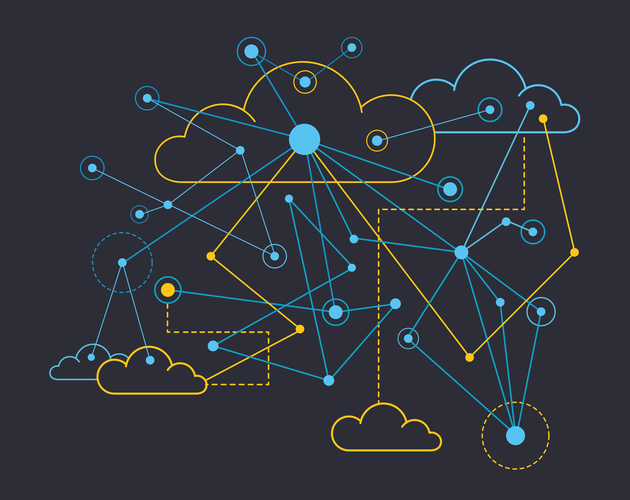In conventional software development methods, security testing was a separate process from the SDLC. The DevSecOps framework improves the SDLC by detecting vulnerabilities throughout the software development and delivery process. The new, enhanced Kubernetes experience (generally available starting February 2024) marks a groundbreaking advancement for platform engineering teams. A Kubernetes-centric IDP that is to be broadly adopted by internal dev teams requires numerous other services and components to deliver on its promise of unlocking DevSecOps at scale. This complex web of interconnected technologies across a containerized environment introduces various challenges related to visibility, resource utilization, security, orchestration, and collaboration. To tackle these challenges, Dynatrace developed a purpose-built solution for platform engineering teams that reduces complexity through automated workflows, including auto-scaling, deployment validation, and anomaly remediation.
DevSecOps brings cultural transformation that makes security a shared responsibility for everyone who is building the software. DevSecOps includes security in DevOps practices by embedding (or left-shifting) security into applications early and continuously through a rapid, iterative, and automated software development life cycle (SDLC). DevSecOps doesn’t aim to turn developers into security experts, but rather educate them in best practices that promote more secure development processes. These methodologies are based on the Agile methodology to speed up processes across departments. These new approaches to software development are based on principles such as collaboration, shared-responsibility, automation, feedback and continuous improvement.
New models in the age of automation
Much like DevOps, DevSecOps is an organizational and technical methodology that combines project management workflows with automated IT tools. DevSecOps integrates active security audits and security testing into agile development and DevOps workflows so that security is built into the product, rather than applied to a finished product. Organizations should step agile development devsecops back and consider the entire development and operations environment. This is the issue that the transition to DevSecOps seeks to overcome, by attempting to shift organizations’ approach to cybersecurity away from compliance, and toward genuine security consciousness. Software teams use different types of tools to build applications and test their security.
A good place to start DevSecOps testing is to automate your testing with Bitbucket Pipelines. Also, be sure to review the test automation tools and resources available on the Atlassian Marketplace. This website is not intended for users located within the European Economic Area. Customer experience at DHS is getting the type of visibility and attention that is usually needed to spark major change.
Allianz Global Corporate and Specialty SE – Reaching SAP Business Agility with SAFe
Moreover, by leveraging Agile principles such as automation, these methodologies lead to faster delivery times, continuous improvement and more innovation. In a traditional DevOps approach, security testing is done near the end of the development process—typically once the application has been deployed to a production environment. This is because security-related tasks such as secure configuration management and vulnerability scanning can be fairly time intensive, slowing down the development process. Each ART has all the skills necessary to build and release the solution, including those responsible for Security, Compliance, Quality Assurance (QA), Testing, and Verification and Validation (V&V). Each increment the ARTs builds assesses the viability of the current solution and its progress toward security, quality, and compliance, providing early feedback on the system’s ultimate fitness for use. Second, specifications are created early and evolve in small batches, with faster feedback on decisions and the opportunity for continuous review and assessment.
- In 2018, the DoD published a guide to «fake agile» or «agile in name only» in software development.
- In the traditional life cycle, build is usually semiautomated; in DevSecOps, build is fully automated and kicks off many other steps through the tool chain.
- However, just as in the last decade many firms have had to redesign their development lifecycles in order to be agile, now they will need to achieve secure development lifecycles in order to stay competitive.
- Leading companies have adopted CICD pipelines to automate workflows and enable best engineering practices to be followed in the writing, reviewing, testing, and deployment of code.
- Shift right indicates the importance of focusing on security after the application is deployed.
- Learn more about our full-time and part-time courses that cater to different spectrums of the adult learning community – from fresh graduates to working professionals across various sectors seeking to upgrade themselves or switch careers.
The best path for an organization to take in adopting DevSecOps depends on many factors, ranging from its size to its familiarity with agile and DevOps methods. But regardless of starting point, all organizations should take care, as they set out on their transformation journey, to avoid a few common pitfalls. Agile and DevOps have many differences, yet they both seek to address complexity, improve quality, and innovate around software design. Businesses should gain peace of mind knowing that even the DoD has had trouble with this transition, and they’re not alone in the challenges of rolling out new processes to make commercial techniques and tools more widely accessible.
Ensure regulatory compliance
However, while the Agile methodology only focuses on the collaboration between development and product management departments, DevOps and DevSecOps go beyond and include the operations team to the equation. With DevSecOps, by contrast, digital products are conceived and built from the ground up to be secure by design. Security requirements and best practices are factored into all elements of a product, from the code itself to the infrastructure it runs on. Engineers take advantage of existing components built by enablement or shared-service teams, such as container templates and standardized monitoring APIs.

This includes out-of-the-box health alerts, health indicators, identification of problematic workload and node conditions, and warning events for various Kubernetes components. Davis AI also provides resource consumption insights for efficient cost optimization and management features for scaling multiple teams. Use DevSecOps tools and a Continuous Integration/Continuous Delivery strategy in software development to enhance software quality by promoting efficient collaboration and communication. It is an aggregation of scrum, eXtreme Programming (XP), and other systems of practice that developers used in years prior, and resulted from those practitioners coming together to unify these approaches into a single set of principles. The result of this unification effort was the Agile Manifesto, which consists of 12 principles, based on four core values. Security-focused code reviews and peer collaboration are pivotal in implementing DevSecOps.
What are the best practices of DevSecOps?
Since features have no value until released, enterprises must constantly build, measure, and learn to evolve digital solutions that quickly attract and retain customers. Figure 3 shows that SAFe’s CDP operates as a closed-loop system that fosters rapid, low-risk experimentation and continuous learning about customers’ needs, habits, and preferences. In SAFe, to say “DevOps” means “DevSecOps.” Protecting customers, employees, citizens, soldiers, families, and businesses is not something we choose to do or not do in DevOps.

Explore the comprehensive IBM portfolio of integration, AI, and automation capabilities designed to deliver the ROI you need. Chisnell said in addition to hiring people, her office is trying to build capacity and capability across the department in a number of ways. That starts, she said, with training to ensure everyone is working from the same standards. Dana Chisnell, the executive director for customer experience at DHS, said the newly established directorate is maturing and growing. Hysen said DHS will have government product and project owners who are responsible for the integration of multiple vendor efforts.
Unlock the Power of DevSecOps with Newly Released Kubernetes Experience for Platform Engineering
When outsourcing their IT infrastructure, companies are often trusting their most sensitive data to an external provider. Cloud services are based on a shared-responsibility model, so both the service provider and the customer are responsible for guaranteeing the best security level possible. Development (Dev) and operations (Ops) departments have traditionally worked in siloes, making some tasks difficult.
The healthcare and financial sectors also maintain massive quantities of sensitive data that must remain secure. While DevOps has always intended to include security, not every organization practicing DevOps has kept it in mind. In a DevSecOps model, security is the primary driving force for the organization.
Products
For example, these tools flag requests to sensitive public endpoints, like user account access forms or database endpoints. Some examples of popular runtime defense tools include Imperva RASP, Alert Logic, and Halo. The test phase is triggered after a build artifact is created and successfully deployed to staging or testing environments.
Accelerated security vulnerability patching
During the build phase, it is critical to review and scan these dependencies for any security vulnerabilities. One of the key advantages of DevSecOps is that it allows for much quicker and more automated deployment of code to various environments, taking into account differences in configuration. This speed advantage is even more pronounced in a modern microservices architecture, as opposed to a more monolithic one. Of course, you need someplace to deploy to, so DevSecOps generally requires the ability to configure environments on demand. We’re the world’s leading provider of enterprise open source solutions—including Linux, cloud, container, and Kubernetes.
Selecting the right tools to continuously integrate security, like agreeing on an integrated development environment (IDE) with security features, can help meet these goals. However, effective DevOps security requires more than new tools—it builds on the cultural changes of DevOps to integrate the work of security teams sooner rather than later. DevSecOps takes security and puts it on the same level as continuous integration and delivery. DevSecOps methodologies emphasize security at the very earliest stages of development and make security an important part of overall software quality. Software teams use DevSecOps to comply with regulatory requirements by adopting professional security practices and technologies. For example, software teams use AWS Security Hub to automate security checks against industry standards.